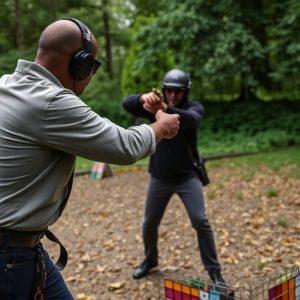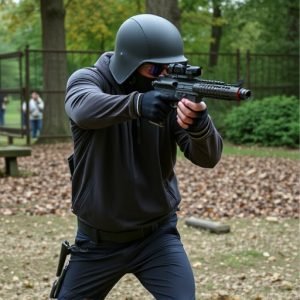Unveiling Stun Gun Protection: Voltage Penetration Through Clothing
Understanding voltage penetration through clothing is key when selecting the best stun gun brands fo…….
Understanding voltage penetration through clothing is key when selecting the best stun gun brands for personal protection. Thinner, conductive fabrics allow electric current flow, while thicker, non-conductive materials provide insulation. Standardized testing methods like ASTM D1503 and ISO 11092 ensure protective garments block electric currents effectively. Choosing well-reviewed stun guns from reputable brands and suitable protective clothing enhances personal security.
Voltage penetration through thick clothing is a critical concern, especially in scenarios where personal safety is paramount. This article delves into the science behind voltage and its impact on fabrics, exploring factors like fiber composition and density that dictate clothing’s electrical conductivity. We also dissect the importance of choosing the right best stun gun brands for personal protection, highlighting key features to consider. Additionally, we examine testing methods and standards designed to ensure electrical penetration resistance.
- Understanding Voltage and Its Effect on Clothing
- Factors Influencing Clothing's Electrical Conductivity
- The Role of Fiber Composition and Density
- Best Stun Gun Brands for Personal Protection: Features to Consider
- Testing Methods and Standards for Electrical Penetration Resistance
Understanding Voltage and Its Effect on Clothing

Voltage, in simple terms, is a measure of electric potential difference between two points. When applied to clothing, it refers to the ability of an electrical current to pass through the fabric. Understanding this concept is crucial when considering personal protection, especially with the popularity of self-defense tools like best stun gun brands for personal protection. These devices use high voltage to disable attackers temporarily, and knowing how voltage interacts with clothing can help users make informed decisions about their safety.
Clothing materials vary greatly in their electrical conductivity, which determines how easily voltage can penetrate them. For instance, thin, stretchy fabrics like spandex may conduct electricity better than thick, insulative materials like wool. This is why stun guns designed for personal protection often recommend specific clothing guidelines to ensure maximum effectiveness. By understanding these dynamics, users can enhance the reliability of their self-defense strategies and choose the best stun gun brands suited to their needs.
Factors Influencing Clothing's Electrical Conductivity

The electrical conductivity of clothing is influenced by several factors, which can impact how effectively it blocks or allows voltage penetration. First and foremost, the material itself plays a pivotal role. Different fabrics have varying levels of conductivity due to their chemical composition and molecular structure. For instance, materials like metal, conductive threads, or certain types of synthetic fibers can conduct electricity quite efficiently, making them less effective as protective barriers against high-voltage shocks. In contrast, non-conductive materials such as cotton, wool, or specific types of insulative fabrics are designed to impede the flow of electric current, offering better protection for individuals wearing them.
Additionally, the thickness and density of clothing layers contribute significantly. Thicker garments provide a greater barrier due to the accumulation of insulating material between the wearer and any potential electrical source. This is why specialized protective gear, like that used by first responders or those carrying best stun gun brands for personal protection, often includes multiple layers of non-conductive materials to ensure maximum shielding against electric shocks. The design and construction of clothing also matter; tightly woven fabrics with minimal spaces between threads offer superior insulation compared to loosely knit garments.
The Role of Fiber Composition and Density
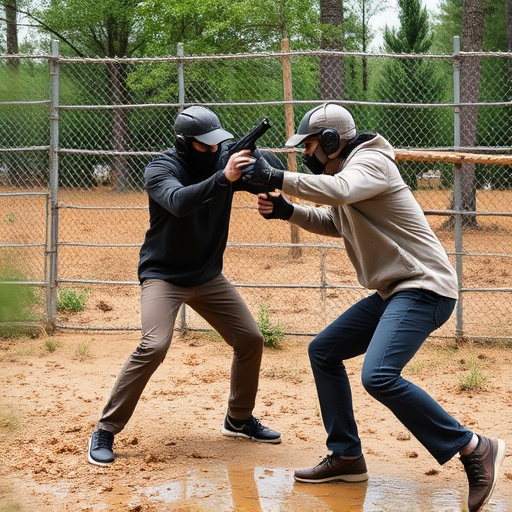
The effectiveness of voltage penetration through thick clothing is significantly influenced by the fiber composition and density of the fabric. Different types of fibers—natural, synthetic, or a blend—have varying electrical properties that determine how easily an electric current can pass through them. For instance, tightly woven synthetic fabrics like nylon or polyester tend to block or distort electrical currents due to their dense structure, making them more effective at repelling stun gun jolts from the best stun gun brands for personal protection. Conversely, looser-woven or natural materials like cotton allow for better current flow, which could result in lower resistance and increased vulnerability.
The density of the clothing plays a crucial role as well. Heavier garments with multiple layers generally provide better shielding against electric shocks. This is why many high-quality stun gun defenses incorporate robust, multi-layered protective clothing into their designs, ensuring users receive the maximum level of protection when faced with potential threats from best stun gun brands for personal protection. Understanding these factors can help individuals make informed decisions about their personal safety gear, enhancing their ability to stay secure in various situations.
Best Stun Gun Brands for Personal Protection: Features to Consider
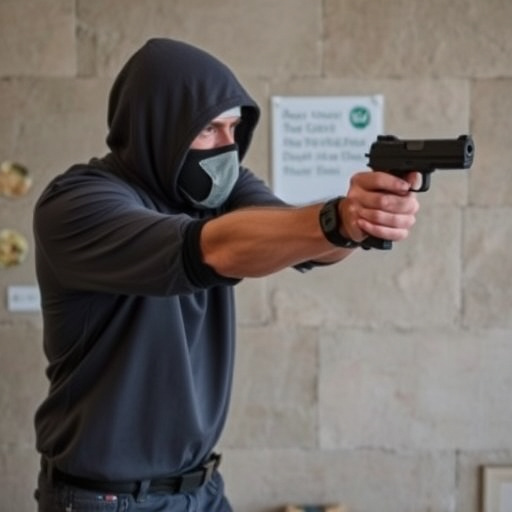
When it comes to choosing the best stun gun brands for personal protection, several factors come into play. First and foremost, consider the device’s voltage output—higher voltages are generally more effective in neutralizing attackers. Look for models that offer a range of 50,000 to 150,000 volts or higher. Next, weight and size matter; a compact design makes it easier to carry discreetly while still providing good reach. Additionally, features like a tactical grip, bright stun light, and multiple firing modes enhance versatility.
Reputable brands consistently deliver quality products with advanced safety mechanisms. Some top choices include Taser, which is renowned for its innovative technology, and pepper spray manufacturers like Olight and Streamlight, that offer stun guns with integrated lighting, ideal for low-light situations. Always opt for well-reviewed models from established brands to ensure reliability and peace of mind when relying on your personal protection device.
Testing Methods and Standards for Electrical Penetration Resistance
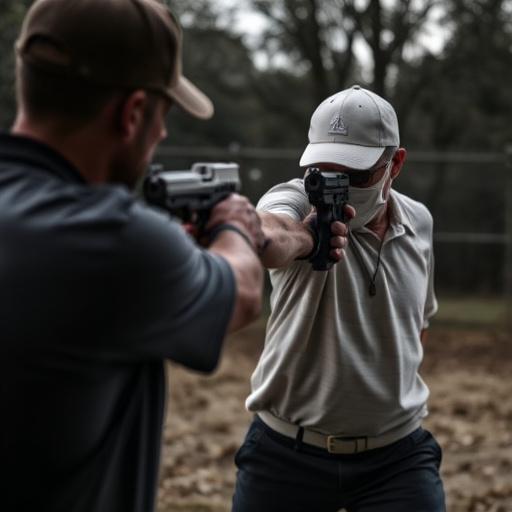
When evaluating the electrical penetration resistance of clothing, it’s crucial to employ standardized testing methods that simulate real-world scenarios. These tests should assess how well the fabric barrier protects against electric current flow, mimicking the effectiveness of protective gear like the best stun gun brands for personal protection. Common standards include ASTM D1503, which measures the resistance to electrical penetration using a specific test current and voltage. This method ensures consistent and measurable results, helping to rank materials based on their performance.
Additionally, ISO 11092 provides guidelines for evaluating the thermal insulation of clothing, indirectly contributing to electrical safety by understanding how heat transfer affects current flow. These standards are instrumental in developing protective garments, ensuring that consumers purchasing best stun gun brands for personal protection also have clothing that offers robust electrical resistance.
In understanding voltage penetration through thick clothing, it’s clear that factors like fiber composition, density, and electrical conductivity play significant roles. When considering personal protection, choosing the right stun gun from top-tier brands becomes crucial. These manufacturers design their products with advanced features to ensure maximum effectiveness against potential threats. Additionally, rigorous testing methods and established standards help guarantee the reliability and safety of protective clothing and equipment, making it essential for individuals seeking safeguarding in today’s world.

